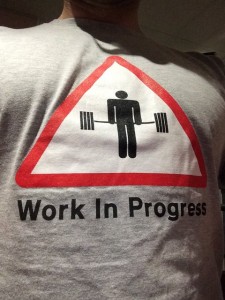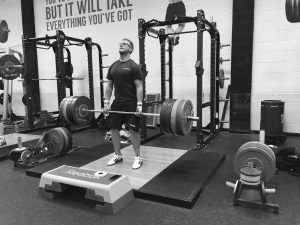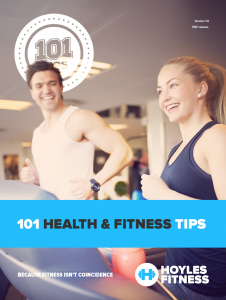Adjusting Rest Periods in Training
Rest Periods in Training – How and Why
One of the biggest factors in your training success isn’t actually your training at all – it’s your rest periods. Use your rest periods to your advantage and you’ll be able to make a significant improvement to your training efficiency and effectiveness.
Rest periods are easy to overlook – in fact I’d bet a chunk of change most people don’t give them a second thought. Most of the people I see in the gym use their rest periods to update their Facebook status or to send a text.
There’s a balance to keep with rest periods though – it’s a bit of a Goldilocks problem, in that too much or not enough rest causes problems…
Rest too long – lose momentum, heart rate drops too low, lose suppleness in the muscles.
Rest too little – not recovered enough for your next set, burn out too quickly, miss your max lifts.
It’s a fine balance and one that has to be understood into order for you to make the most of your workout.
When rest periods are taken seriously as part of a training programme, they are done so relative to the training goals and outcomes….
Strength sports, especially at the maximum lift end of the spectrum typically leave longer between reps – I’ve heard of rest periods as long as 10 minutes between sets.
On the other hand, where muscle building, condoning, improving work capacity or fat loss is the desired outcome, shorter rest periods appear to work better.
I’ll touch on the reasons for this later on in the post, but have highlighted it now to show that rest periods aren’t merely the time between sets – they are an important variable in training and adjusted correctly can have a major effect on training outcomes.
Reducing Rest Periods – length and number
I was watching a recent Arnold Schwarzenegger video on YouTube in which he explained some of his philosophy around rest periods. It was during this era of bodybuilding that the superset, tri-set, giant sets etc (where exercises are performed back-to-back) were born.
The bodybuilders of the time discovered a number of benefits to these reduced rest periods…
- The accidental cardio boost from the reduced rest period meant they didn’t have to worry about cardio any more. Less rest = higher heart rate = improved conditioning!
- Workouts took much less time – they were saving a lot of time by not resting between sets and reps.
- Muscle growth and fat loss improved. At the time they didn’t know why – now sports science has explained this (Growth Hormone release is improved and calorie burn during the workouts is higher).
How Do You Determine Rest Period Length?
How long you should be resting depends on a lot of factors. The goal shouldn’t be to cut resting completely, just reduce it to the least amount of rest you can get away with whilst still maintaining a high training quality.
Rest period length should be determined only when you’ve considered the following factors…
Your Current Level of Conditioning
Your current level of fitness is a big deal as a starting point. If you are new to training and are really unfit, forcing yourself to rest for 30 seconds between sets is a stupid idea – you won’t have recovered enough ahead of your next set, meaning your workout quality will be terrible.
You get around this issue by making your rest period evolve – as you get fitter, reduce your rest periods. It’s like lifting in the sense that you won’t attempt a 150kg squat on your first workout. As you progress, make adjustments.
Don’t punish yourself by dropping too far, too quickly.
Your Workout Structure and Goals
If you are looking for physique improvements, you want to keep your rest periods as short as you can get away with – rest long enough to recover ahead of your next exercise/set, but no longer.
Keeping your heart rate elevated and the exercise intensity high has shown to trigger higher calorie burn and growth hormone release (basically makes you bigger and leaner).
If your goal is performance, rather than physique based, you may want to rest for longer. You want to rest long enough so that you are fully recovered ahead of your next set, especially if you are strength or power athlete aiming for a PB.
Research suggests around 3 minutes of rest between heaviest sets because the energy used to perform strength and power movements, ATP, is used up very quickly and takes around 3 minutes to replenish.
Considerations When Reducing Rest Periods…
The Weights You Lift…
You may have to reduce your weight. This isn’t failure, it’s physiology. If you’re going to be lifting with shorter rest periods, you won’t be as well rested and recovered between sets.
If you’re not as recovered you’ll end up with a reduced capacity to lift weights, so in the short term at least, you may have to reduce your weights.
Timing Rest Periods
Accuracy is important when it comes to rest periods – if you’re guessing the length of your rest periods there’s a good chance you’ll either rest too long and lose the intensity and higher heart rate benefits, or not rest enough and end up reducing your workout quality.
I’ve mentioned before, I use a Polar M400 heart rate monitor watch (read my review of it here) which allows me to keep an eye on my rest periods – both in terms of time and heart rate.
Your Personal Training Preferences
In my weight lifting club I typically rest shorter than many of my club mates during our training sessions. There’s two reasons for this…
- I want to keep moving – I stiffen up and lose focus if I take too long between sets.
- I like to keep my sessions shorter, but with a higher level of intensity – it helps with conditioning.
Think about your own training. Of course the article is full of tips, but use these as a guideline, not a gospel. Take into account your personal preferences and training goals then build your workouts and your rest periods around this.
One point remains though – pay attention to your rest periods. They could be the missing link in your training. By simply tweaking your rest periods to suit your goals, you may take your training and results to a whole other level.
In the meantime, if you subscribe to the Hoyles Fitness mailing list you’ll receive a free eBook containing 101 Health and Fitness Tips, plus offers and news exclusive to Hoyles Fitness subscribers. Click the image below to download…




One thought on “Adjusting Rest Periods in Training”